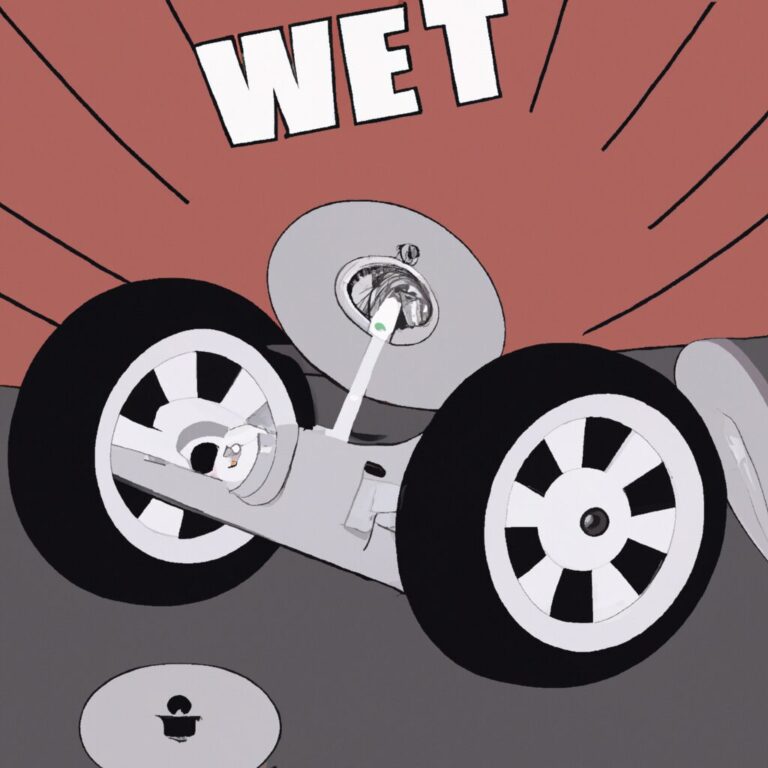How to Tell If Oil Pressure Sensor is Bad
If you suspect a bad oil pressure sensor, look for warning signs such as fluctuating pressure readings or a malfunctioning oil pressure gauge. In some cases, a faulty sensor may trigger a warning light on the dashboard.
The oil pressure sensor plays a crucial role in monitoring the oil pressure within the engine. When it malfunctions, it can lead to serious engine damage if not addressed promptly. We’ll explore the common symptoms of a bad oil pressure sensor, how to diagnose the issue, and the steps to take to rectify the problem.
We’ll also discuss the importance of regular sensor maintenance and the potential risks of ignoring a faulty oil pressure sensor. By the end, you’ll have a better understanding of how to identify and address this issue to ensure your vehicle’s engine health.
Signs Of A Bad Oil Pressure Sensor
One indication of a malfunctioning oil pressure sensor is fluctuating pressure readings on the gauge. Another sign could be a trigger of the oil warning light on the dashboard. In case of such signs, it is advisable to have the sensor inspected by a professional promptly.
Dashboard Warning Light Activation
If you’re wondering how to tell if your oil pressure sensor is bad, one of the most common signs is the activation of the dashboard warning light. This warning light, usually in the shape of an oil can or an oil drop, is designed to alert you to potential problems with your oil system.
When the oil pressure sensor is faulty, it may send incorrect signals to the dashboard warning light, causing it to activate. This can be quite alarming, as it suggests a potential issue with the oil pressure in your vehicle.
Typically, the dashboard warning light will illuminate when the oil pressure drops below a certain threshold. If you notice the oil pressure warning light coming on while driving or starting your car, it’s important to take immediate action to avoid potential engine damage.
Fluctuating Oil Pressure Gauge
Another sign that your oil pressure sensor may be bad is a fluctuating oil pressure gauge. The oil pressure gauge is part of your vehicle’s instrument cluster and provides a visual indication of the oil pressure.
If the oil pressure sensor is faulty, it may provide inaccurate readings to the oil pressure gauge. This can cause the oil pressure gauge to fluctuate, showing higher or lower pressure than the actual oil pressure in the engine.
While it’s normal for the oil pressure gauge to fluctuate slightly when the engine is running, if you notice significant and frequent fluctuations in the oil pressure gauge, it could be an indication of a faulty oil pressure sensor.

Credit: www.systemgroup.kz
Causes Of An Oil Pressure Sensor Failure
Oil pressure sensors play a crucial role in monitoring the oil pressure within a vehicle’s engine. However, oil pressure sensor failure can occur due to various reasons, leading to potential engine damage if left unaddressed. Understanding the underlying causes of oil pressure sensor failure can aid in timely detection and resolution of these issues.
Oil Contamination
The presence of oil contamination, such as dirt, debris, or metal shavings, can directly impact the functionality of the oil pressure sensor. Contaminants within the oil can interfere with the sensor’s ability to accurately measure oil pressure, resulting in erroneous readings or sensor failure. Additionally, excessive sludge buildup can further inhibit the sensor’s performance, warranting regular oil changes and maintenance to mitigate these issues.
Broken Wiring
Broken or damaged wiring connected to the oil pressure sensor can impede proper electrical signals, leading to inaccurate readings or complete sensor failure. Friction, wear and tear, or exposure to high temperatures can contribute to wire damage over time, prompting the need for thorough inspection and potential replacement of the wiring harness. Ensuring a secure and intact electrical connection is imperative in maintaining the sensor’s functionality.
Diagnosing A Faulty Oil Pressure Sensor
Using A Mechanical Gauge
Step 1: Disable the ignition and locate the oil pressure sensor.
Step 2: Disconnect the sensor and connect a mechanical gauge to the port.
Step 3: Turn on the ignition and observe the gauge for oil pressure readings.
Checking The Wiring
Step 1: Inspect the wiring harness for any visible signs of damage or corrosion.
Step 2: Utilize a multimeter to test the sensor’s electrical continuity.

Credit: www.carparts.com
Replacing The Oil Pressure Sensor
If you’re unsure whether your oil pressure sensor is bad, learn how to tell by following these simple steps to replace it. This guide will help you diagnose and fix any issues with your oil pressure sensor without the need for professional help.
Gathering Necessary Tools
Before replacing the oil pressure sensor, it is essential to gather all the necessary tools. Having the right tools handy will make the replacement process smoother and more efficient. Here are the tools you will need:
- Socket wrench set
- Oil filter wrench
- Shop towels or rags
- Jack and jack stands (if necessary)
- New oil pressure sensor
- Thread sealant
With these tools ready, you can proceed to replace the faulty oil pressure sensor.
Step-by-step Replacement Process
Follow these step-by-step instructions to replace your oil pressure sensor:
- Ensure your vehicle is parked on a level surface and the engine is turned off. It is a good practice to let the engine cool down before getting started.
- If necessary, use a jack and jack stands to raise the front of your vehicle to gain access to the oil pressure sensor location underneath the engine.
- Locate the oil pressure sensor. It is usually located near the oil filter or close to the engine block. Refer to your vehicle’s manual for the exact location.
- Using the appropriate socket wrench, carefully loosen and remove the electrical connector from the oil pressure sensor. Be cautious not to damage the connector or wires.
- Next, use the oil filter wrench to remove the oil filter. This step will provide you with better access to the oil pressure sensor. Remember to place a container or drain pan beneath the oil filter to catch any oil that may spill out.
- Once the oil filter is out of the way, use the socket wrench to loosen and carefully remove the old oil pressure sensor. It may be necessary to rotate it counterclockwise.
- Before installing the new oil pressure sensor, inspect the threads on the sensor and clean them if necessary. Applying a small amount of thread sealant to the new sensor’s threads will help prevent any oil leaks.
- Carefully install the new oil pressure sensor, tightening it by rotating it clockwise. Be careful not to overtighten, as it can damage the sensor or engine. Use the socket wrench to achieve a snug fit.
- Reinstall the oil filter and tighten it by hand. Ensure it is securely tightened without excessive force.
- Reconnect the electrical connector to the new oil pressure sensor. Ensure it is properly seated and secure.
- If you raised the vehicle with a jack and jack stands, safely lower it back to the ground.
- Double-check all connections and make sure everything is properly tightened and secured.
- Finally, start the engine and check for any oil leaks around the new oil pressure sensor. If there are no leaks, you have successfully replaced the oil pressure sensor.
By following these simple steps and having the necessary tools at your disposal, you can easily replace a faulty oil pressure sensor. Always consult your vehicle’s manual for specific instructions and safety precautions.
Preventative Maintenance Tips
Ensure the longevity of your vehicle by staying attentive to potential issues. Learn to recognize signs of a faulty oil pressure sensor to prevent major breakdowns. Regular checkups and addressing any warning signs promptly can help you avoid costly repairs.
Regular Oil Changes
Changing oil regularly helps maintain proper lubrication for the sensor.
Ensure oil changes are done as recommended by the manufacturer.
Routine Inspection Of Sensor
- Periodically check sensor for any signs of wear or damage.
- Clean sensor area during oil changes to prevent buildup affecting sensor performance.
Consider replacing sensor during major services to ensure optimal performance.

Credit: m.youtube.com
Frequently Asked Questions On How To Tell If Oil Pressure Sensor Is Bad
What Happens If Oil Pressure Sensor Is Bad?
If the oil pressure sensor is bad, it can lead to inaccurate readings, causing potential engine damage. It can also trigger the check engine light and impact performance. It’s important to replace a faulty oil pressure sensor to ensure proper engine function and prevent costly repairs.
How Do You Test An Oil Pressure Sensor?
To test an oil pressure sensor, you’ll need a digital multimeter. First, disconnect the electrical connector from the sensor. Then, connect the red probe to the sensor’s signal wire and the black probe to a good ground. Start the engine and measure the voltage with the multimeter.
If the reading matches the specifications for your vehicle, the sensor is working correctly.
How Do You Diagnose Oil Pressure Problems?
Diagnose oil pressure problems by checking for leaks, using a pressure gauge, and inspecting the oil pump.
Will A Bad Oil Pressure Sensor Throw A Code?
Yes, a bad oil pressure sensor can trigger a diagnostic trouble code (DTC) in the engine control module.
How Can I Detect A Bad Oil Pressure Sensor?
Oil pressure warning light appearing, fluctuating oil pressure gauge, or engine overheating may indicate issues.
What Are The Consequences Of A Faulty Oil Pressure Sensor?
Ignoring a bad sensor can lead to engine damage, decreased performance, and potential safety hazards.
How Essential Is The Oil Pressure Sensor In A Vehicle?
The sensor is crucial for monitoring oil pressure levels, ensuring engine lubrication, and preventing damage.
Conclusion
It is crucial to recognize the signs of a faulty oil pressure sensor to ensure the proper functioning of your vehicle’s engine. By paying attention to warning lights, fluctuating oil pressure readings, or unusual engine noises, you can take timely action to address the issue.
Regular maintenance, including checking and replacing the sensor as needed, will help keep your engine running smoothly and prevent more severe damage in the long run. Stay vigilant and take necessary steps to maintain your vehicle’s health.


